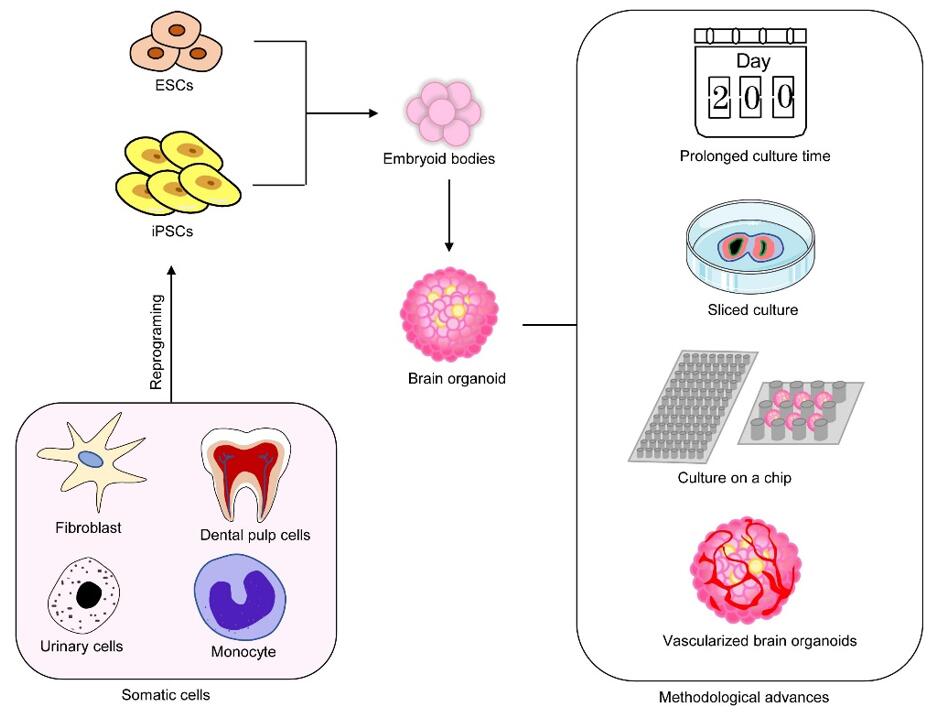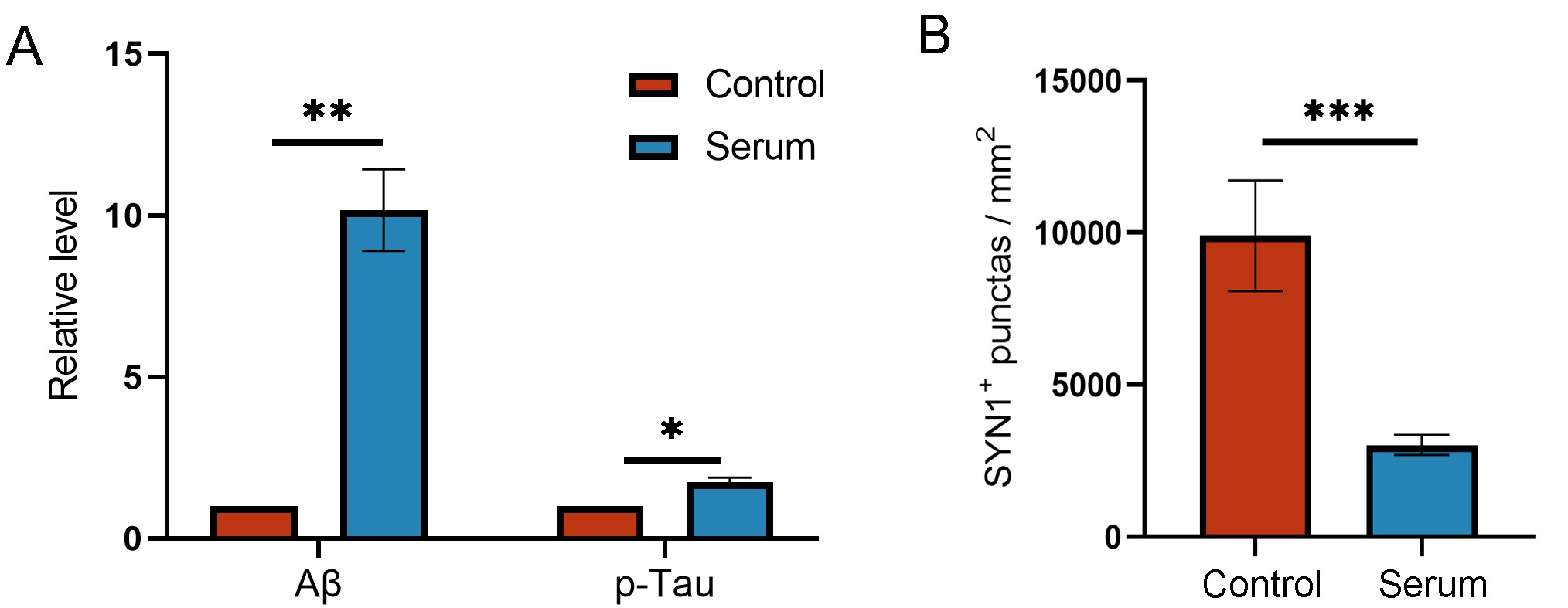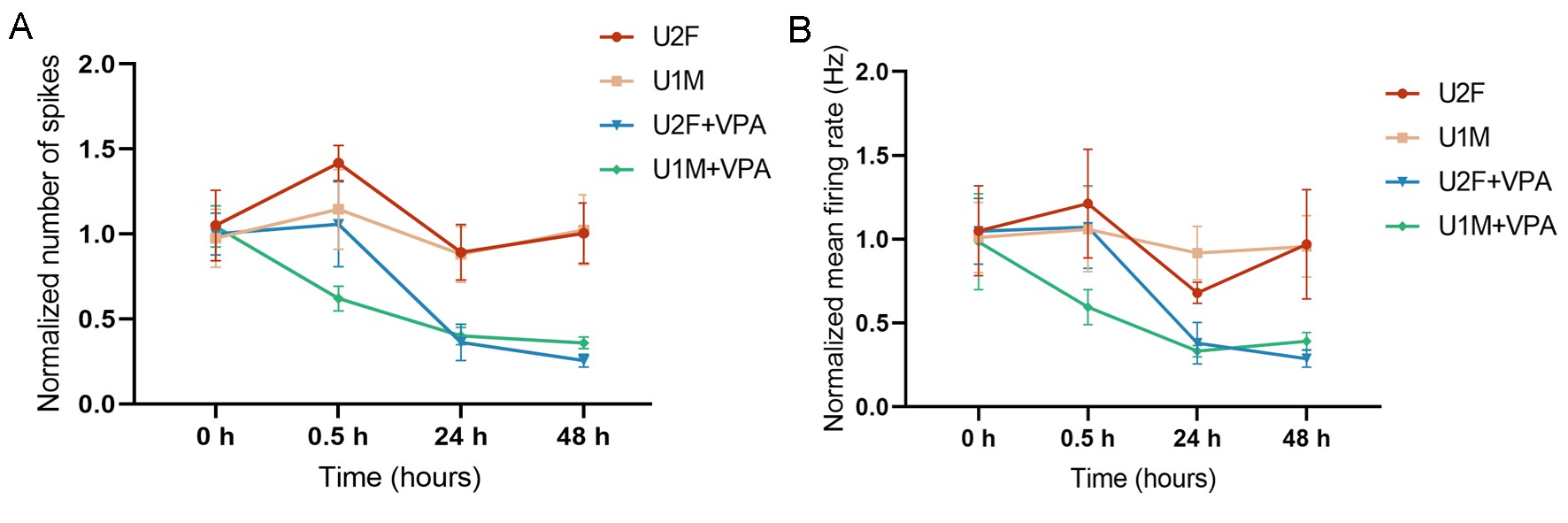Brain Organoid Differentiation Service from iPSC
While induced pluripotent stem cells (iPSCs) have replaced the ethically questionable human embryonic stem cells, iPSC-based neuronal differentiation studies remain descriptive at the cellular level but fail to adequately provide the details that could be derived from a complex, 3D human brain tissue. Brain organoids have emerged as an excellent model for investigating brain development and the mechanisms of related diseases.
Creative Bioarray developed a protocol that is able to differentiate brain organoids from induced Pluripotent Stem Cells(iPSCs). We also provide characterization of iPSC-derived organoids using immunocytochemistry and multi-electrode array (MEA).
iPSC-derived brain organoids can be used for
- Exploring mechanisms for neurological disorders
- Drug screening
- Modeling brain disorders
- Development of organ-chips

We provide various types of brain organoids:
- Microglia-enriched brain organoid
- Oligodendrocytes brain organoid
- Blood-vessel-enriched brain organoid
The brain organoids we deliver are a mixture of various neuronal cells, and the mixing ratio can be adjusted according to customer requirements.
 Figure 1.
Phase contrast images taken after differentiation, showing the morphological changes occurred.
Figure 1.
Phase contrast images taken after differentiation, showing the morphological changes occurred.
 Figure 2. Differentiation of different types of
brain organoids.
Figure 2. Differentiation of different types of
brain organoids.
Creative Bioarray also provides iPSC-derived brain organoids as ready-to-use products, as well as the specialized medium to support the optimal performance of the organoids. If you have any need for Brain Organoid Differentiation service, do not hesitate to contact us for this special service. Please let us know what you need and we will accommodate you. We look forward to working with you.
Case Studies
Case 1: iPSC-derived brain organoids exposed to serum exhibited increased levels of amyloid-beta (Aβ) aggregates and phosphorylated microtubule‐associated tau protein (p‐Tau) (A). The high-content cellular analysis platform demonstrated a significant reduction in synapses (B), indicating the formation of Alzheimer's disease (AD)-like pathology, which can be utilized for constructing sporadic AD models.

Case 2: Using our high-throughput electrophysiological platform to analyze brain organoids exposed to Valproic Acid (VPA), there was a significant decrease in the number of spikes and mean firing rate, which is of significant importance for studying the pathogenesis of ASD.

Explore Other Options
For research use only. Not for any other purpose.
Services
-
Cell Services
- Cell Line Authentication
- Cell Surface Marker Validation Service
-
Cell Line Testing and Assays
- Drug-Resistant Cell Models
- Cell Viability Assays
- Cell Proliferation Assays
- Cell Migration Assays
- Soft Agar Colony Formation Assay Service
- SRB Assay
- Cell Apoptosis Assays
- Cell Cycle Assays
- Cell Angiogenesis Assays
- DNA/RNA Extraction
- Custom Cell & Tissue Lysate Service
- Cellular Phosphorylation Assays
- Stability Testing
- Sterility Testing
- Endotoxin Detection and Removal
- Phagocytosis Assays
- Cell-Based Screening and Profiling Services
- 3D-Based Services
- Custom Cell Services
- Cell-based LNP Evaluation
-
Stem Cell Research
- iPSC Generation
- iPSC Characterization
-
iPSC Differentiation
- Neural Stem Cells Differentiation Service from iPSC
- Astrocyte Differentiation Service from iPSC
- Retinal Pigment Epithelium (RPE) Differentiation Service from iPSC
- Cardiomyocyte Differentiation Service from iPSC
- T Cell, NK Cell Differentiation Service from iPSC
- Hepatocyte Differentiation Service from iPSC
- Beta Cell Differentiation Service from iPSC
- Brain Organoid Differentiation Service from iPSC
- Cardiac Organoid Differentiation Service from iPSC
- Kidney Organoid Differentiation Service from iPSC
- GABAnergic Neuron Differentiation Service from iPSC
- Undifferentiated iPSC Detection
- iPSC Gene Editing
- iPSC Expanding Service
- MSC Services
- Stem Cell Assay Development and Screening
- Cell Immortalization
-
ISH/FISH Services
- In Situ Hybridization (ISH) and RNAscope Services
- Fluorescent In Situ Hybridization
- FISH Probe Design, Synthesis and Testing Service
-
FISH Applications
- Multicolor FISH (M-FISH) Analysis
- Chromosome Analysis of ES and iPS Cells
- RNA FISH in Plant Service
- Mouse Model and PDX Analysis (FISH)
- Cell Transplantation Analysis (FISH)
- In Situ Detection of CAR-T Cells & Oncolytic Viruses
- CAR-T/CAR-NK Target Assessment Service (ISH)
- ImmunoFISH Analysis (FISH+IHC)
- Splice Variant Analysis (FISH)
- Telomere Length Analysis (Q-FISH)
- Telomere Length Analysis (qPCR assay)
- FISH Analysis of Microorganisms
- Neoplasms FISH Analysis
- CARD-FISH for Environmental Microorganisms (FISH)
- FISH Quality Control Services
- QuantiGene Plex Assay
- Circulating Tumor Cell (CTC) FISH
- mtRNA Analysis (FISH)
- In Situ Detection of Chemokines/Cytokines
- In Situ Detection of Virus
- Transgene Mapping (FISH)
- Transgene Mapping (Locus Amplification & Sequencing)
- Stable Cell Line Genetic Stability Testing
- Genetic Stability Testing (Locus Amplification & Sequencing + ddPCR)
- Clonality Analysis Service (FISH)
- Karyotyping (G-banded) Service
- Animal Chromosome Analysis (G-banded) Service
- I-FISH Service
- Molecular Karyotyping (aCGH)
- Droplet Digital PCR (ddPCR) Service
- Digital ISH Image Quantification and Statistical Analysis
- SCE (Sister Chromatid Exchange) Analysis
- Biosample Services
- Histology Services
- Exosome Research Services
- Drug Metabolism and Pharmacokinetics (DMPK)
-
In Vivo Pharmacokinetics & Bioanalysis Services
- Pharmacokinetic and Toxicokinetic
- PK/PD Biomarker Analysis
- Bioavailability and Bioequivalence
- Bioanalytical Package
- Metabolite Profiling and Identification
- In Vivo Toxicity Study
- Mass Balance, Excretion and Expired Air Collection
- Administration Routes and Biofluid Sampling
- Quantitative Tissue Distribution
- Target Tissue Exposure
- In Vivo Blood-Brain-Barrier Assay
- Safety Evaluation Services